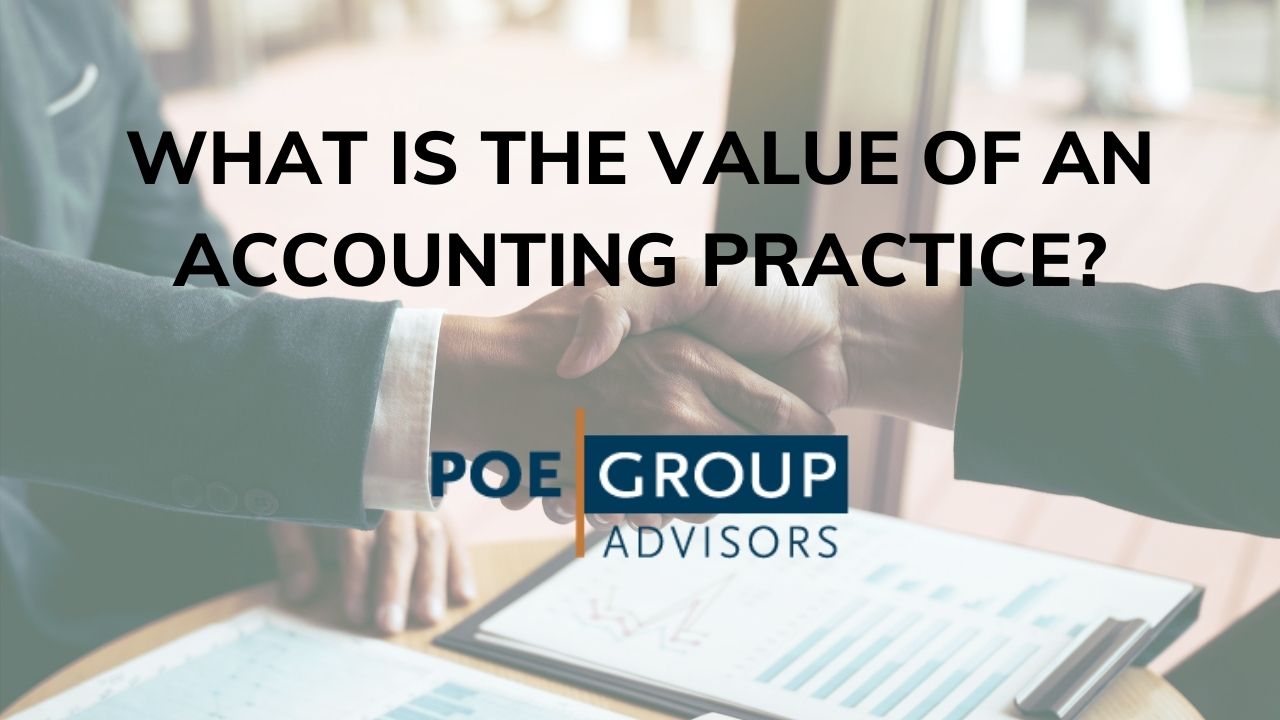Included with permission, the following is an excerpt from Selling A Practice by Roy Braatz. Roy Braatz is a very good friend of mine…and we used to work together which was a great privilege and a whole lot of fun. He has more than 15 years of experience in the field of mergers and acquisitions and has operated three successful companies of his own. Roy and I both started out selling accounting practices for Accounting Practice Sales. I started in the South Eastern United States and Roy was in California. He also currently serves on the board of directors for Quest Business Brokers, Inc.
If you would like a confidential estimate of the value of your practice, click here. In the comments/question box, type “Valuation request.”
What is My Accounting Practice Worth?
The market currently demands a rate of 1.1 to 1.3 times gross revenue. The all-time record approaches 1.4 times gross and some sell at less than 1 times, but these are the extremes. While every seller asks this question, it’s also one of the more difficult to answer for any particular practice. In a very real sense, every practice sells for the same price: the amount of money a qualified buyer is willing to pay! Also of utmost importance is to remember that price cannot be separated from terms, as will be discussed in the next few chapters. As the saying goes, “You name the price; I’ll name the terms.”
It is possible for sellers to receive all cash at close and not guarantee client retention. Due to years of brainwashing about guaranteeing client retention, this sentence should be read over and over again until it sinks in. To better understand how one receives all cash without guaranteeing client retention, one needs to recognize who the actual buyers are. (See “Who are the buyers?”) Also, knowing what is most valuable to buyers in the market is imperative. Ultimately, the open market (your peers) will decide the value of your practice based on what they are willing to pay and how they are willing to pay for it.
Following are the seven factors that have the greatest effect on accounting practice value.
Recurrence of Revenues: A professional accounting firm or practice generally consists of recurring revenue or a client stream that returns annually for another “drink at the trough.” If this important component even appears to be absent, the selling price is affected negatively. For instance, an accounting firm drawing significant income from non-recurring items like litigation support might not be worth as much as one composed largely of traditional tax and write-up. A practice that relies on periodic tax consulting, as opposed to one heavy into on-going tax compliance, will generally be less appealing to prospective buyers.
Size: The size impacts the number of potential buyers. For example, there are many more buyers willing and able to buy a practice with $300,000 of annual gross revenue than one bringing in $2,000,000. A larger pool of potential buyers results in a better multiple. On the other hand, a very small practice might lose value if it is not large enough to support the buyer.
Location: Location also has a great impact on the potential number of buyers in today’s market and, consequently, on the value. A firm in a metropolitan area often sells for more than one located in the country or a smaller city. In addition, the location within a city itself is important. Much like real estate, a practice in a popular, growing area of a city might receive 10-20% more than an identical practice a few miles down the freeway.
Profitability: Certainly, the greater the net cash flow, the greater the price. Firms with high billing rates and fees are attractive to buyers since this usually translates into less work for more money. However, cash flow is not the dominating determinant that one might presume it would be. Looking at two practices with the same gross revenue, the one with twice the cash flow will not sell for twice the price. Accounting, tax, and CPA practices are still sold based on gross revenues.
Terms: Pricing and terms cannot be separated. For example, one potential buyer may offer $400,000 cash at closing; a second offer could be comprised of a fixed price of $400,000 with $100,000 down and the balance paid with interest over the next two years; still, a third buyer may agree to pay $400,000 with 20% down and 20% of collections each year for four years. On the surface, these offers may appear to represent the same value, but I assure you they are far from equal. (See next question “What are the various terms of an accounting practice sale?”)
Negative Factors: There are a number of negative variables which impact price. These include anything that affects the buyer’s perception of how many clients will eventually be retained and how the purchase will benefit the buyer. Among the many possible problems which may be encountered, some common issues are declining growth, incomplete or missing records, concentration issues (a significant percentage of gross revenue being tied to one or two very large clients), long-term leases, unreasonable transition expectations, or key employees who have not signed a covenant not to compete. Additional problems may also arise when only a portion of a practice is being sold, or a seller plans to continue working in the office after the close of the sale.
Professional Marketing: Every buyer in town loves to see ‘FOR SALE BY OWNER’ and views it as an opportunity to pay cents on the dollar. A good broker, however, provides essential experience in marketing, negotiation, valuation, and financing. More importantly, a specialized broker has access to thousands of buyers immediately. Using a professional almost always results in better prices, better terms, and better buyers.
Terms can be laid out on a financial continuum: On one end we find terms of 20% per year for five years based entirely on collections, and on the other end we find all cash at close. A transaction that involves seller financing but no client retention guarantee is a little to the left of an “all cash at close” deal. To the right of the 20% agreement is the cash deal with a 12-month look-back period. In the middle, we find the disguised contingency, which appears to be a fixed price but is contingent because the seller has financed the deal and the buyer is totally dependent on the practice to make the payments. Here’s where we must discuss the difference between strong and weak buyers—those who allow the seller to lien the equity in their home and those who have no assets to use as collateral.
There remains a misconception that tax and accounting practices have some intrinsic “value” that all potential buyers recognize and with which all agree. If one is selling a gallon of milk this might be true. But people that drink milk purchase it regularly and have a good idea of what it costs. This is not true of tax and accounting practices. Many people in the world would not purchase a practice even if it were offered to them for a dollar. In a metropolitan area of millions, there might only be a couple of hundred potential buyers for a particular practice, in other locations, there might be considerably less.
Suppose there are one hundred potential buyers for a specific practice. Would all these buyers agree as to what it was worth? Of course not! They would not even come close to an agreement. If a practice is offered at a reduced price, all potential buyers might step up to the plate with a check in hand. On the other hand, it could be priced where only one or two would agree to purchase. This is because each buyer has a unique concept as to value, and possesses different degrees of motivation and interest. Sometimes a seller turns away a very motivated and capable buyer because, for one reason or another, the seller decides the buyer is not quite perfect. The seller’s misconception is that there are a large number of buyers and that all buyers are equally motivated and equally willing to pay some known price. That misconception could be costly. It is important to be familiar with the market in your geographical area.
This same misconception comes into play when sellers think the only trick is finding “a” buyer. Practice owners routinely say, “Oh, I have a buyer” or “I have someone interested in buying my practice.” The implication is that finding a buyer is the hard part. Their assumption, again, is that all buyers are fully willing to pay the same price and terms. While it’s possible that “a” buyer is the one willing to pay the best price and terms, it’s highly improbable. It’s just as likely he is the one willing to pay the least. The objective in selling a CPA firm (unlike selling milk) is to first locate all potential buyers for the practice, then from that group determine the top five or ten percent in terms of motivation and ability. It is from this group one must find “the” buyer if one is interested in receiving the true value of the firm.
If you own an accounting firm with a solid client base and are looking for the opportunity to profit from the sale of the small business you’ve built, make sure you take all the necessary steps to get the sale price and terms you desire, which means truly figuring out how to value an accounting practice. Partnering with a broker that has a proven succession process has many benefits when you’re selling an accounting practice. You will be faced with many details you’ve never thought of before when negotiating the sale/acquisition of your accountancy practice. Whether you own a small firm with a high revenue-producing client base or a large firm with a large client list, make sure you take the right approach for a seamless transition. Download our succession planning guide to get started and contact us today to learn more about our services.
Last Updated: March 17th, 2021








